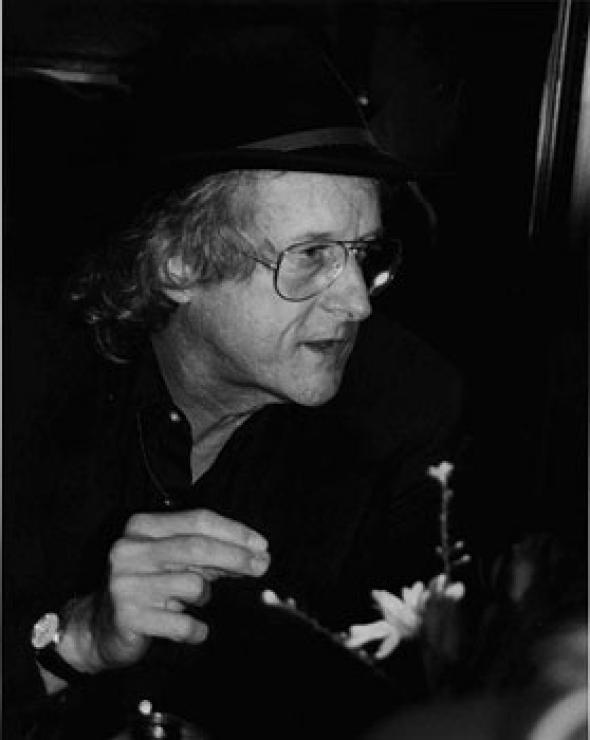Xanadu
JJ King gives props to pre-internet visionary Ted Nelson, technology’s own Samuel Taylor Coleridge. Coleridge’s mythical poem Xanadu is as much about what’s forgotten, what doesn’t make it into Kubla Kahn’s pleasure dome, as it is about the walled garden, the damsels and the dulcimers. A preface accompanying the poem would have us believe that the opium-induced reverie which produced Xanadu was interrupted by a Person (‘on business’) from Porlock — sending the major part of the vision skudding irretrievably back into the reaches of Coleridge’s Unconscious — or whatever passed for an Unconscious back in 1816.
1960. Enter Ted Nelson’s Xanadu — a technology of remembering, a "magic place of literary memory", a system designed to ensure that nothing important is ever forgotten again. The system itself remembers the pioneering thought of Vannevar Bush, who back in 1945 had lamented the strictures of alphabetical indexing systems, suggesting that the human mind did not work in their linear mode, but operated instead "by association". "With one item in its grasp," Bush said, "it snaps instantly to the next that is suggested by the association of thoughts, in accordance with some intricate web of trails carried by the cells of the brain...The speed of action, the intricacy of trails, the detail of mental pictures, is awe-inspiring beyond all else in nature."
Bush proposed a device he called a ‘memex’ to more closely model this putative functioning of the human mind, "the basic idea of which is a provision whereby any item may be caused to select immediately and automatically another." This process of linking items together through informational ‘trails’ was the key element of Bush’s seminal idea, and it was this element which was remembered as ‘hypertext’ (a term Nelson coined) in Xanadu. Bush’s conceptual information technology, which produced a space of data by drawing ‘trails’ between different items of information as though they were physical objects, became in Nelson’s vision a conception of an "evolutionary structure, the docuplex", the fundamental structure for storing electronic information. Elsewhere, this docuplex became a ‘docuverse’, a "swirling complex of equi-accessible writing, a single great universal text and data grid".
Nelson’s system is the original vapourware. He initially announced that Xanadu would be ready for release by 1976, but by the time of the 1987 edition of Literary Machines, this due date had been set forward to 1988. In 1988, however, the Xanadu Operating Company was bought up by Autodesk, which in 1992 dropped the Xanadu project altogether, perhaps sensing that the World Wide Web had to some extent superseded it.
Indeed, Xanadu’s two chief characteristics — the conception of a data space and of hypertextual links between elements of information in that space — are at the centre of Tim Berners-Lee’s successfully implemented Hypertext Transfer Protocol system, the heart of today’s World Wide Web. And if the Xanadu system is all about remembering — ensuring that what has past is sustained in the docuverse, then in one sense it has been a success. Berners-Lee, in creating his own implementation of hypertext (the now ubiquitous HyperText Transfer Protocol, HTTP), is remembering the work of Nelson, and responding, via him, to the ideas of Vannevar Bush. HTTP, like Bush’s Memex, was originally designed to produce a way for scientists to communicate and organise their data via a system which would use hypertext to provide "a single user-interface to many large classes of stored information". As Berners Lee himself puts it, "I proposed that a global hypertext space be created in which any network-accessible information could be referred to by a single ‘Universal Document Identifier’." Xanadu, Nelson’s technology of remembering, may be a dying dream; but its memory lives on in the protocol underlying the World Wide Web.
JJ King <jamie AT metamute.com>
Ted Nelson’s Literary Machines: The Report on, and of, Project Xanadu Concerining Word Processing, Electronic Publishing, Hypertext, Thinkertoys, Tommorow’s Intellectual Revolution, and Certain other topics Including Knowledge, Education, and Freedom is privately published by Theodor Holm Nelson, 1983.
Mute Books Orders
For Mute Books distribution contact Anagram Books
contact@anagrambooks.com
For online purchases visit anagrambooks.com








